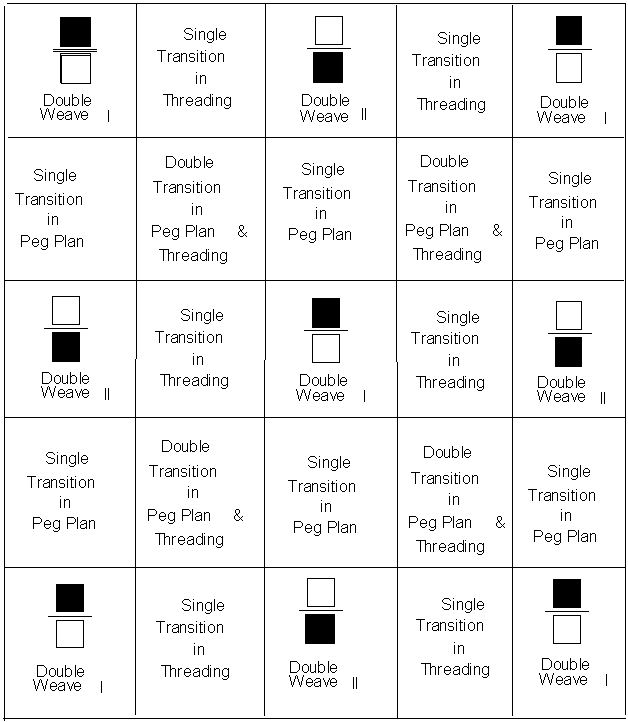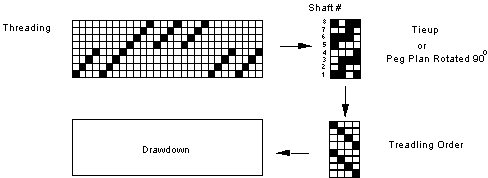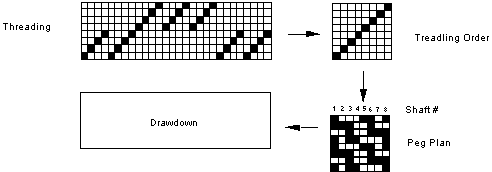
A Glimpse of Chapter 2. Some Nuts and Bolts of Network Drafting.
This approach to network drafting is summarized in the diagram from Chapter 1.

Before discussing the transition possibilities for the threading and for the tieup or peg plan, letís look at two ways to develop the drawdown. The first is the traditional scheme from threading to tieup (or peg plan) to treadling.

The second scheme is often used with a dobby loom when single ties are linked to multiple shafts. There are advantages to each method. A third approach will be mentioned later in the overview of chapter 3.

A. Two examples of asymmetrical and symmetrical transitions in the threading illustrate how the threading lies on the 4-end initial network for an 8-shaft loom.


B. The tieups or peg plans for traditional double weave lead to two cloth layers shown here as a dark cloth above a light cloth or vice versa.


C. It is the nature of network drafting to introduce transitions in the tieup or peg plan. This is developed through procedures where first a pattern line is selected followed by laying the pattern line on a template for a certain weave structure. For those not familiar with this approach to network drafting, by all means read Alice Schleinís book "Network Drafting: An Introduction". The methods being developed in this book are rather different. For double weave, the transition for the peg plan is between the two forms repeated here.

Examination of these two peg plans for double weave show that some positions always have pegs present while other positions never have pegs.

The question then is whether "to peg or not to peg" in the 8 possible open positions of this diagram. Each position can either have a peg or not have a peg, that is 2 choices. So that leads to 2 x 2 x 2 x 2 x 2 x 2 x 2 x 2 = 256 peg plans, all of which can be used in double weave. As we have already indicated above, two of the 256 peg plans lead to two cloth layers in traditional double weave while the remaining 254 peg plans produce a single cloth layer in integrated double weave.
When network drafting principles are applied to double weave, there will be areas in the final cloth with two cloth layers and in other areas, there will be a single cloth layer.
The question of the proper sett for networked double weave becomes important.
Appendices A-1, A-2, B-1 and B-2 present drawdowns and drawups for the 256 peg plans. Two examples of the peg plans and drawdowns are shown next. The design is easier to see when 4 drawdown units are presented. These two are the positive-negative image of each other. The numbers come from Appendix A-1
Peg Plan Drawdown 4 Unit Design


Some design possibilities are shown in the previews for Chapters 3, 4, and 5.